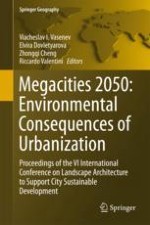2018 | OriginalPaper | Chapter
Soil Functional-Environmental Evaluation and Monitoring in Urban Ecosystems: Principal Functions, Background Objects and Uniform Algorithms of Assessment
Author : Ivan I. Vasenev
Published in: Megacities 2050: Environmental Consequences of Urbanization
Publisher: Springer International Publishing
Activate our intelligent search to find suitable subject content or patents.
Select sections of text to find matching patents with Artificial Intelligence. powered by
Select sections of text to find additional relevant content using AI-assisted search. powered by
